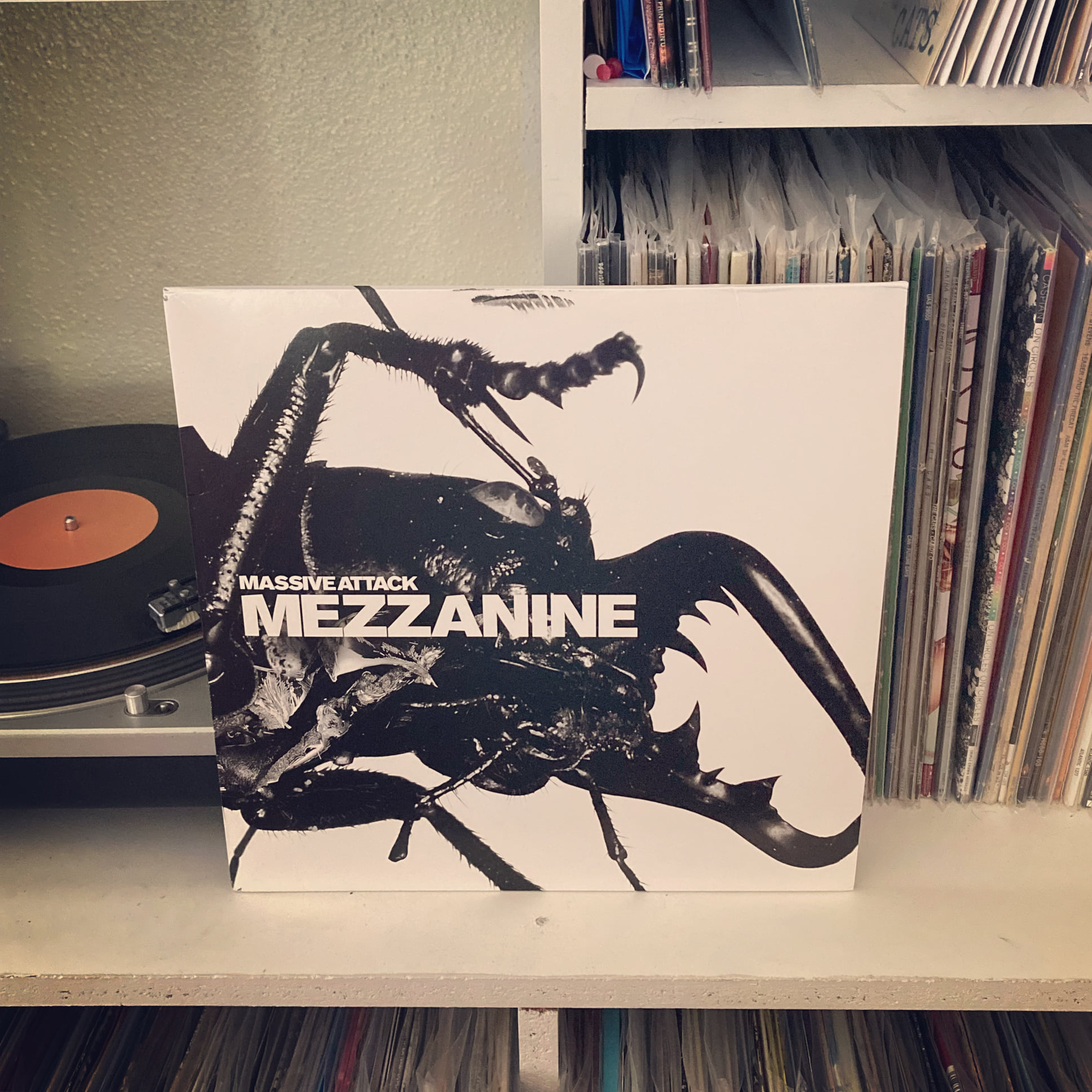 For years, I’ve had a fascination with trip hop. I became a huge fan of Portishead when Third was released, and later got into acts like Emiliana Torrini, Telepopmusik, and Air when my wife and I started dating. I’ve been a fan of Gorillaz since the beginning of their career.
For years, I’ve had a fascination with trip hop. I became a huge fan of Portishead when Third was released, and later got into acts like Emiliana Torrini, Telepopmusik, and Air when my wife and I started dating. I’ve been a fan of Gorillaz since the beginning of their career.
But somehow, I’ve ignored the rulers of genre, Massive Attack, and their most celebrated album Mezzanine. Of course, I’ve known how great this album is, but much in the same way that I know that I’m breathing: it’s happening all the time, but I don’t usually give it very much attention.
Recently, I decided to change that. And boy, am I glad I did.
Like most people, I’d imagine, most of my familiarity with this album came from “Teardrop,” which found popularity as the theme song for House in the 2000s. But other than that, I was clueless. In fact, I realized just now that the voice in that track is that of Elizabeth Fraser from dreampop legends Cocteau Twins. But beyond that—and this album’s frequent inclusion in lists of the best albums ever—I went into this album blind (though with the rare encouragement of my wife, who is usually irked by my constant collecting).
But “Teardrop” served as a fitting guide. While many albums with legendary singles can’t escape their shadow, Mezzanine offers several tracks of the same mood and caliber. Had any other song on here been used as a theme song in its place, they likely would have found the same success. The entire album is filled with the same sort of sexy, slinking beats baptized in the dark power of Voodoo, seasoned with jazz for taste.
“Angel” opens the album with some of the richest bass tones I’ve ever heard, swelling with an energy that is at once anxious and tranquil, as if it’s relegated itself to its plight. Drum machines and vinyl samples fill the atmosphere without feeling too mechanical. “Dissolved Girl” similarly rides the line between romantic and neurotic—until the neurosis erupts with a noisy guitar riff. “Man Next Door” is essentially just a remix of a song by reggae band The Paragons, but these DJs put enough of their own inventiveness into it to make it fit right into the track list (and showcase their dub influences).
While the female guest vocalists get most of the attention here, there are a few tracks that the band members’ cover themselves. “Risingson” faces the undesirable position of coming between “Angel” and “Teardrop,” but it stands on its own two legs, thanks to the pseudo rap of Daddy G (it was the 90s, remember) and a Velvet Underground sample. The Raga-tinged “Inertia Creeps” and the creeping “Mezzanine” are just as enjoyable.
But I would be remiss if I talk about the songs here without mentioning the actual sounds. Because let’s not forget that trip hop was, like dub reggae, first and foremost the realm of producers. Trip hop songs often serve as little more than demonstrations of the DJs’ skill as a remixer. And to that end, Mezzanine is flawless. The soundscapes of these tracks are absolutely spellbinding, as sonically rich as they are grooving. The samples are reshaped and molded to the point where their source material is entirely indistinguishable.
Despite the sonic showcase, these songs are great though. And the combination of peerless production and excellent songcraft makes Mezzanine not only one of the best trip hop albums of all time, but one of the best albums of all time, period. It transcends genre, scene, and time period. A flawless, timeless record that will be getting plenty of time on my turntable.